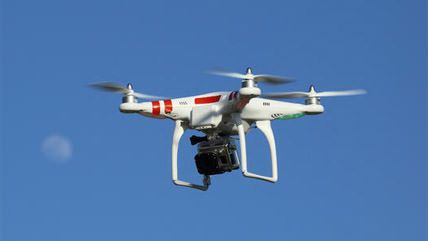You Can't Fly a Drone Here, Here, and Here


The Federal Aviation Administration (FAA) is in charge of regulating unmanned aerial vehicles, or drones. Sort of. Their regulations aren't totally comprehensible (when they actually exist), and a federal court has affirmed that the FAA's case-by-case judgment calls aren't actually legally binding.
This lack of clarity about what is allowed where has made flying drones—which is in many cases a glorified term for remote-controlled toys—difficult and legally tricky for a lot of people. Services ranging from a beer delivery business to a charitable search-and-rescue team have been hassled and shut down by the FAA. The administration sometimes even throws hissy fits over people filming their own weddings with drones.
Bobby Sudekum, a data analyst and engineer for the mapmaking site MapBox, can't cure FAA ineptitude and pettiness, but as consumer sales of drones continue to grow he is trying "to help people find safe places to fly." To do so, he created the above map and published it this week. Click on it, and it will lead you to an interactive version on which you can zoom and see more precise locations.
He explains that this map is "just a start" and that anyone can submit information about more no-fly spots. So far, the off-limits areas marked are only national parks, military bases, and 5-mile radii around medium and large airports. Wired points out that "you'll see on the map … that there isn't a no-fly area over Berkeley Lab," which is a secure national laboratory. "Similarly, there is no zone marked around Lawrence Livermore National Laboratory, one of the country's two nuclear weapons labs."


Show Comments (14)